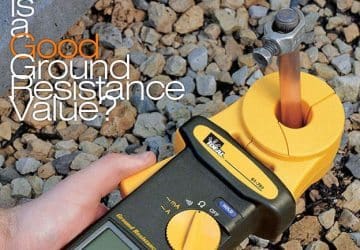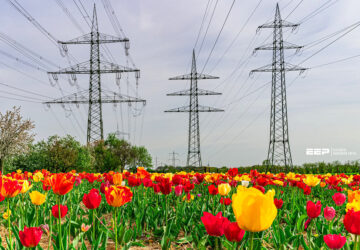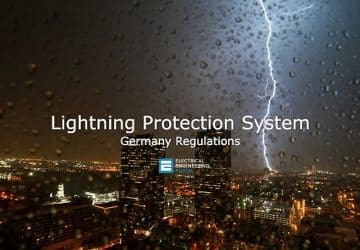What’s Really Important When You’re Designing The Low Voltage Switchgear?
Here what’s important when you’re designing the low voltage switchgear: Device Application in the Supply Circuit Short-circuit strength Release (Trip Unit) Device Application in Supply Circuits (Coupling) Device Application in the Distribution Circuit Device Application in the Final Circuit The… Read more
Oct 07, 2013 | By Edvard Csanyi

What Is a Good Ground Resistance Value?
The goal in ground resistance (or earth resistance) is to achieve the lowest ground resistance value possible, that makes sense economically and physically, when contacting the earth, also known as the soil/ground rod interface. Ideally, a ground should be zero… Read more
Oct 02, 2013 | By Edvard Csanyi

Comparison Of Neutral Earthing Methods
Neutral earthing systems are very similar to circuit breakers in that they do nothing until something in the system goes wrong! There are several methods for system earthing which can be generally divided into three main categories: Insulated earthing, Solid… Read more
Sep 16, 2013 | By Edvard Csanyi

Lightning And Surge Protection For Cable Networks And Antennas For TV (Part 2)
Continued from part one: Lightning And Surge Protection For Cable Networks And Antennas For TV (Part 1) If an antenna is protected by isolated air-termination systems it means: – That in the area of flat roofs an air-termination rod will be… Read more
Sep 13, 2013 | By Edvard Csanyi

Lightning And Surge Protection For Cable Networks And Antennas For TV (Part 1)
IEC 60728-11 complies with the state of the art and offers easy, standardized and effective protective mechanisms against the effects of lightning strikes into antennas. Antennas installed according to this standard do not increase the probability of lightnings to strike… Read more
Sep 09, 2013 | By Edvard Csanyi

Total Losses in Power Distribution and Transmission Lines
This technical article discusses two types of transmission and distribution losses, technical losses and non-technical losses (or commercial losses). Power generated in power stations pass through large and complex networks like transformers, overhead lines, cables and other equipment and reaches… Read more
Aug 19, 2013 | By Jignesh Parmar

National Fire Alarm Code Defined By NFPA 72
NFPA 72 is the National Fire Alarm Code. The importance of installing smoke and fire alarms in homes is supported by results from exhaustive investigations of home fires indicating that measurable quantities of smoke come before detectable quantities of heat…. Read more
Aug 16, 2013 | By Edvard Csanyi

Equipotential Bonding For Metal Installations
The electrical low voltage consumer’s installation requiring certain earthing resistances (disconnection conditions of the protective elements) and the foundation earth electrode providing good earthing resistances at cost-effective installation, the foundation earth electrode is an optimal and effective complement of the… Read more
Jul 26, 2013 | By Edvard Csanyi

Surge protective categories defined by ANSI/IEEE C62.41
Three different surge protective classes or zones have been defined by ANSI/IEEE C62.41, Recommended Practice on Surge Voltages in Low Voltage Power Circuits. These classes are illustrated in the pictorial diagram Fig. 12-1. Category C (outdoors) is the region outside the… Read more
Jun 28, 2013 | By Edvard Csanyi

Overvoltages Caused by Lightning
Overvoltages of atmospheric origin arise from uncontrollable sources and their severity for the load depends on many parameters that are determined according to where the lightning strikes and the structure of the electrical network. The impact of lightning on a… Read more
Apr 26, 2013 | By Edvard Csanyi

An overview of GFCI – Ground-fault circuit interrupter
The NEC requires that Ground-Fault Circuit Interrupters (GFCIs) be installed in many different rooms and locations in both public and private buildings. They are now required in bathrooms, kitchens, appliance rooms or spaces, and garages. In addition, they are required… Read more
Apr 10, 2013 | By Edvard Csanyi

Responding to Cyber Intrusion in SCADA System
Continued from technical article: Detecting Cyber Intrusion in SCADA System The “three R’s” of the response to cyber intrusion are: Recording, Reporting, and Restoring. Theoretically, it would be desirable to record all data communications into and out of all substation… Read more
Apr 08, 2013 | By Edvard Csanyi

Active fire protection measures in power substation
Active fire protection measures are automatic fire protection measures that warn occupants of the existence of fire, and extinguish or control the fire. These measures are designed to automatically extinguish or control a fire at its earliest stage, without risking… Read more
Apr 01, 2013 | By Edvard Csanyi

Preparing to synchronize a generator to the grid
Synchronizing the generator to the grid can be tricky if you don’t know what you’re doing. But let’s start from the beginning. A device that transforms mechanical power from a prime mover into AC electric power at a particular voltage… Read more
Mar 27, 2013 | By Edvard Csanyi

Lightning Protection System – Germany Regulations
The purpose of a lightning protection system is to protect buildings from direct lightning strikes and possible fire, or from the consequences of the load-independent active lightning current (non-igniting flash of lightning). If national regulations, e.g. building regulations, special regulations… Read more
Mar 22, 2013 | By Edvard Csanyi


